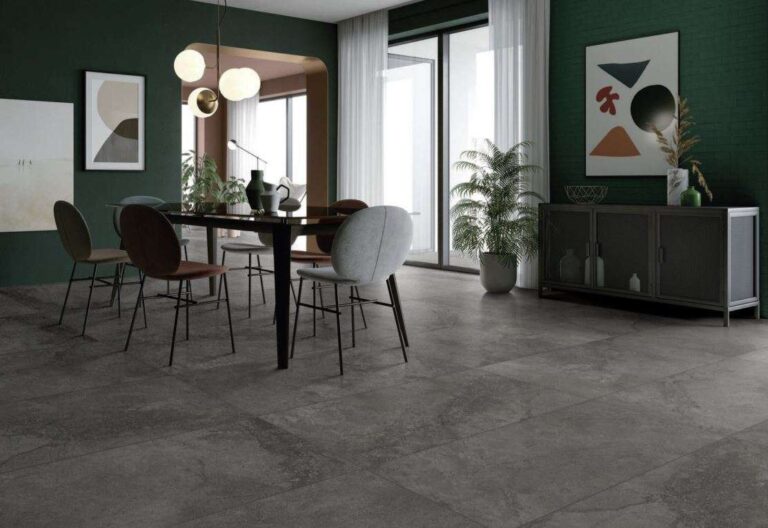Have you ever experienced what it feels like to walk into a kitchen, bathroom, or bedroom with the walls and floors covered with aesthetically pleasing backsplash and tile surfaces.
There’s a good chance that each style and preference is installed for its unique and practical benefits.
Whether you are using a large or small format tile, there are visual benefits and beautiful patterns that make them a fit for designers and homeowners.
This guide will give practical tips on choosing the best tile, a detailed comparison of each, and how they stand out to fit modern interiors, styles, and spaces.
What Is a Backsplash?
Backsplashes are protective vertical surfaces made of tiles, stones, or metals installed to prevent water damage, stains, and dirt from reaching the wall of a kitchen, bathroom, or any other personal space with regular water contact.
Aside from their protective functionality, they are designed to be aesthetically appealing to boost the overall appearance of countertops and cabinets, hence preventing the need for constantly painting walls where they are installed.
Small-format tiles are considered to be a go-to choice for designers and construction services upgrades due to their textures, detailed look, and how well-suited they are for vertical surfaces.
How Small Format Tiles Beautify Kitchen and Bathroom Spaces
A Small format tile are mosaics and pebble showers uniquely designed for installation in bathrooms, cafes, and kitchens.
They are often 4×4 inches or smaller and are made from ceramic, porcelain, or glass.
The endless patterns of small-format tiles make it ideal for these spaces because they make rooms and walls appear visually larger, especially with each grout line, making kitchen backsplashes and showers provide more reflection.
Compared to larger tiles, its grout lines also create more traction, ensuring the floors and walls are not slippery, as they naturally break up water pools, and declutter dirt, making it safer underfoot.
Over the years, the majority of homeowners have also found their mosaic designs and layouts extremely useful since they can get creative with them to make custom art-like walls.
In the long run, they are considered to be eco-friendly, considering how they can be made from recycled glass or sustainably sourced clay.
Perks of Large Format Tiles for Living Spaces and Residential Zones
Unlike small format tiles, large format tiles have a more versatile usage for private and shared home areas, office spaces, and indoor areas that have minimal contact with water.
Its minimalist designs add machine tones that fit the aesthetic of a workspace or a cozy dining room.
Some of the popular options include porcelain slabs, marble-look large tiles, glass panels, or porcelain panels, which often come in 12×24 inches, giving them a fluid appearance that makes them pop without distractions.
While small format tiles have more grout and visual texture, large format tiles are designed with minimal grout, sleek finishes, and veining lines that make them perfect for modern and contemporary aesthetics.
They also have a low-maintenance surface that makes cleaning very easy, compared to the regular grout cleaning needed for small-format tiles.
Factors to Consider When Choosing the Best Tile Format
While each of these tile formats has its unique peculiarities, below are pointers you should consider before having them installed.
- Wall size: The size of your wall area is a major determinant of the type of file format to be used. This is because small walls around faucets, kitchen stoves, and cabinets would fit perfectly with a small tile format installed, while wide walls or walkways should be styled with large format tiles.
- Cleaning and upkeep: Kitchen and bathroom surfaces demand regular cleaning and maintenance; hence, opting for small tiles would be ideal since they are made specifically for these locations. On the other hand, large format tiles demand less
maintenance, and their bold artistic expressions make them a blend for rooms with more lighting.
- Your budget: Construction services often recommend large slabs since they cost less material per square foot if you’re working on a budget. However, small tiles come at a higher price due to the unique slip-resistant edge they have compared to larger ones.
- Visual style: Small-format tiles have many designs embedded on them due to how they are commonly used for kitchen and bathroom walls. With these designs, homeowners worry less about having to paint or style kitchen walls compared to large tiles that complement furniture and other continuity in an interior space.
Endnote
Deciding on the best tile format to opt for can be straightforward, especially if you know where you want to have them installed.
Whether you’re thinking of a kitchen revamp, renovating a bathroom, or adding decorative touches to the interior space of your home.
These tiles give you the satisfaction that makes a surface become much more than a wall, but rather a home’s signature art.



